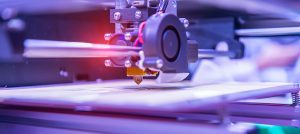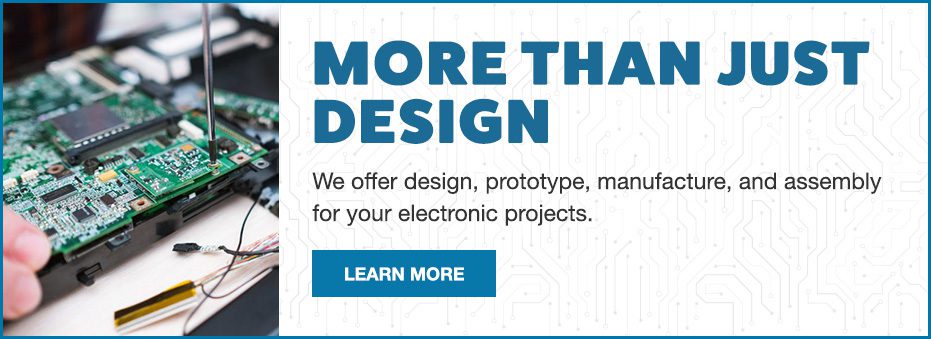Prototyping and Rapid Development in Electronic Manufacturing
Prototyping should always be part of product development, as it will demonstrate any potential design flaws or issues with functionality before a large-scale product run. However, while traditional prototyping can still be costly and time consuming, rapid prototyping is a way to quickly fabricate a working prototype to aid designers and engineers in visualizing, redesigning, and testing a product before the full production run. Rapid prototyping focuses on speed, efficiency, and flexibility, with the goal of getting the product to market quickly.
What is Rapid Prototyping?
Prototyping is a crucial step in the product development cycle for any electronic device, as it allows designers to see their device and make changes before the manufacturing process begins. Rapid prototyping involves quickly creating and testing a functional sample of an electronic product before mass production, with the intent to improve the time to market. The goal is to use this prototype and the information about functionality, design, and potential issues that can be gained from a sample to accelerate the product development process. By looking at a prototype, the designer can quickly see a functional device that will demonstrate flaws and provide opportunities for improvements before moving to a full-scale production run. With rapid prototyping techniques that are employed by high-quality electronic contract manufacturers, clients are able to get their products to market more quickly and avoid costly manufacturing issues or design flaws.
What are the Stages of Rapid Prototyping?
There are several steps to rapid prototyping that can be implemented by an electronic contract manufacturer.
Design
The electronic contract manufacturer will work closely with the designer to collaborate for the best design. A design for manufacturability (DFM) analysis can be performed. The engineering team will take the design into a digital form, which will include the PCB layout and diagram.
Prototype Fabrication
Based on the design, the ECM will create the prototype using the most advanced methods and tools. This will include manufacturing the particle circuit board, assembling the components, and integrating the electronics. The working prototype should closely resemble what the final product will be so it can go through the testing stage.
Testing
The working prototype will be put through all the necessary tests to ensure that it will perform as expected and comply with all industry requirements and regulations. Compatibility testing, functional testing, and electrical testing are all included. The designer and engineering team will work to collect input, document the experience, and make all necessary adjustments to the prototype.
Refinement
Adjustments will be made to the prototype based on the test results, continuing until the prototype is functioning and performing exactly as needed.

Why is Prototyping Important?
Prototyping should always be part of the product development process. With a functional prototype, designers, engineers, and the electronic manufacturing team can see a working model and determine if there are any flaws in the design before investing in expensive components and a full run. Instead of waiting for the final product before beginning the testing process, tests can be run on the prototype before the manufacturing process begins.
Does Rapid Prototyping Accelerate Product Development?
Although rapid prototyping has many benefits, the most important to most product developers is how employing rapid prototyping can accelerate the product development cycle. Rapid prototyping increases the likelihood of a successful product launch, as early user involvement and adjustments to the design ensures that the product that is manufactured is the one that will ultimately be brought to market. Rapid prototyping allows the designer and electronic contract manufacturer to collaborate on the best way to design and build the product before a complete run of the product is issued.
Any design flaws or functional problems can be addressed very early in the process, remedied, and tested. Testing a single prototype can be done far more quickly than evaluating a full run of a product, and design can be tweaked easily. Once the rapid prototyping is complete, a large scale run can be done without the risk of costly errors.
What are the Other Benefits of Rapid Prototyping?
In addition to accelerating the product development cycle, rapid prototyping has other advantages. Many electronic contract managers suggest rapid prototyping not only to move more quickly, but to improve the overall quality and reduce the cost of the manufacturing process.
- Rapid Prototyping Allows Designers to Try New Ideas and Concepts
New ideas and concepts can be groundbreaking, assuming they work. In order to determine if they will work as expected, a working prototype must be developed to answer questions and validate whether the new features are valuable to users. Rapid prototypes allow for immediate feedback without devoting the time and money for a full-scale run.
- Rapid Prototyping Can Minimize Costs
The risk of manufacturing a product that won’t work as expected can be a costly one, and fixing a problem after a large run is expensive and wasteful. Prototyping can reduce development and manufacturing costs by minimizing the need for design reworks. Any problems can be addressed early in the process at a relatively low cost.
When you are evaluating electronic contract manufacturers with which to partner for product development and production, it is important to see if your potential ECM has rapid prototyping capabilities with an onsite team of engineers. Choosing the right ECM can accelerate your time to market, reduce your costs, and ensure that your product functions exactly as you have envisioned. To get a quote on your next project, contact Levison Enterprises today.
Start Your Quote Now!